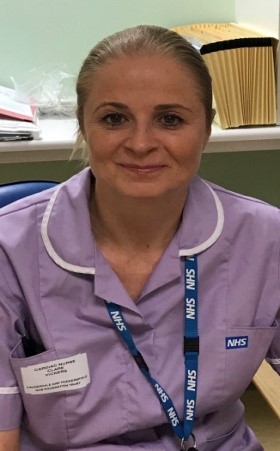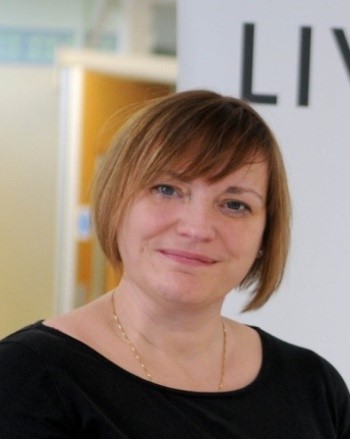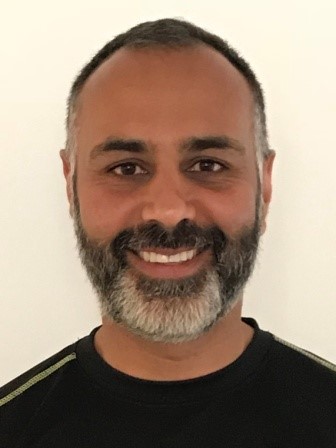This week’s leadership message comes from Matt Graham, Programme Director for West Yorkshire Association of Acute Trusts (hospitals working together).
Hello my name is Matt…
As the Programme Director for the West Yorkshire Association of Acute Trusts (WYAAT - hospitals working together), my role is to work with colleagues in the six acute hospital trusts in the West Yorkshire and Harrogate Health and Care Partnership.
The hospital trusts set up WYAAT in 2016 because they recognised that they could do more together to improve services and deliver the best possible care for the people in our area. We’ve come a long way since then and the scope of collaboration between the trusts has expanded.
We are now running 12 programmes covering all areas of hospital services, from shared procurement of supplies, through pathology and radiology, to clinical services such as vascular and orthopaedics.
This week I wanted to share with you how the trusts are creating a single vascular service, the West Yorkshire Vascular Service (WYVaS), for the whole of West Yorkshire. Currently five hospital trusts provide vascular services to people living in West Yorkshire: Airedale, Bradford, Calderdale and Huddersfield, Leeds and Mid Yorkshire, with three trusts, Bradford, Calderdale and Huddersfield, and Leeds, providing ‘arterial centres’ delivering the most complex vascular surgery such as major amputations and aortic aneurysm repairs (surgery to repair weak areas in the body’s major blood vessel which takes blood away from the heart). Like many of our hospital services, the care the arterial centres provide to people is highly specialised and while we already deliver excellent outcomes for patients, working as a single service will allow us to improve our resilience and sustainability, and ensure that patients in all areas have access to specialist skills.
In 2018 the trusts agreed that it would be best for people needing vascular care if all vascular services in West Yorkshire (except Harrogate, who work with York Teaching Hospitals NHS Foundation Trust to provide vascular services for people in their area) were brought together into a ‘single service’ under one management team. This will create one of the largest vascular services in England covering a population of over 2million and with almost 40 specialist vascular consultants (surgeons and interventional radiologists). This scale gives us the opportunity to make West Yorkshire a centre of excellence for vascular care, and offer staff both greater flexibility and development, including opportunities to sub-specialise and pursue interests in research and teaching. This is not only better for people receiving care but also importantly enables us to attract, recruit and retain great staff.
To make the single service a reality the hospital trusts have appointed three people to lead the West Yorkshire Vascular Service. Neeraj Bhasin, a consultant vascular surgeon from Calderdale and Huddersfield, has been appointed as Regional Clinical Director; Clare Vickers, currently Arrhythmia and Complex Cardiac Device Clinical Nurse Specialist at Calderdale and Huddersfield, as Head of Nursing and Jane Lang, currently Head of Diagnostics at Airedale, as General Manager. We’re really excited to have them lead this new service and between them they bring a great deal of expertise and experience which we know will lead to better health outcomes for patients – which is after all what it is all about.
|
|
 |
 |
|
Neeraj Bhasin |
Clare Vickers |
Jane Lang |
Alongside my work leading the WYAAT programmes, I have also been working with colleagues from across the Partnership to develop a West Yorkshire and Harrogate, whole system, clinical strategy. This important piece of work has seen colleagues from our six places - Bradford District and Craven; Calderdale, Harrogate, Kirklees, Leeds and Wakefield - and all health sectors come together. Our aim has been to build on the vision and objectives set out in ‘Our next steps to better health and care for everyone’. The findings will influence and be captured in the Partnership’s five year strategic plan being developed in response to the NHS Long Term Plan – and due to be published in the autumn.
Our first step has been to try and understand better the overall picture of clinical services in West Yorkshire and Harrogate. As you can imagine it’s a big complex piece of work. To begin with we are doing this in three parts: patient journeys for frailty; children (young people and their families), and developing “service profiles on a page”.
We have drafted over 20 service profiles for hospital specialties (covering the whole scope of the service from prevention and wellbeing, through primary and community care, to specialised hospital services) and are also developing profiles for specialist mental health services. The profiles capture the current shape of the services – their size, configuration and challenges - as well as an indication of future opportunities – including new technology and digital.
This in itself has been really helpful. Pulling all this information together has given us a richer understanding of the overall health and care system in West Yorkshire and Harrogate. It has also shown us how little we know and identified lots of areas for further investigation to understand the system more clearly. It’s a challenge worth embarking on and we’re really getting to grips with it.
Looking across all the ‘profiles’ suggests potential consistent ways to organise services and think about the interfaces between parts of the system differently, particularly between acute hospital services and primary care networks and community services, for example GPs. In individual specialties they help make the ‘left shift’ real by identifying specific activity, currently in hospital, which could, if we develop the right services with sufficient staff, be done differently and closer to home.
Tellingly for me, they also demonstrate clearly the importance of properly investing in key areas of preventing ill health – smoking, alcohol, exercise and obesity – and tackling health inequalities - because they affect future demand in so many different services and conditions. .
That brings me on to the patient journeys….
Working with our multi-disciplinary steering group, the team developed four (fictional but representative) patients and their families’ stories for frailty and another four for children and families. The intention being to use structured interviews with health professionals and people receiving care in each to understand how their journey would be experienced in each place.
Over the last few months, our brilliant team from Harrogate and District NHS Foundation Trust have interviewed over 200 professionals, as well as people who access care, covering our six local places and all sectors to describe the services and other assets available for each journey in each place. And the results have been fascinating!
On the 4 March, we held a workshop with around 50 professionals from across West Yorkshire and Harrogate to share the results of the frailty patient journeys. A number of themes came across loud and clear. They reinforce many of the approaches we are trying to embed across the Partnership. For instance there was a really strong sense that, despite talking about ‘asset based’ approaches (building on people’s strengths and support networks), our default setting is to focus on the deficits (their problems), not the assets. Our language reflects this – we talk about people being ‘frail’ and ‘socially isolated’ and we focus on dealing with what they can’t do rather than supporting them to build on what they can do. Even our services are named negatively – a ‘frailty service’ or a ‘falls service’. Language is important, especially when trying to empower people, and we need to be more conscious of its impact on people’s lives.
The other, overwhelming, message was the value people get from meeting others working in similar services across our system, and even within the same place. On my table, two ladies from different, but complementary, services within the same place met for the first time – as a result of this they will be bringing their teams together to find ways to support each other. We shouldn’t underestimate the benefit of networking and using the Partnership as a catalyst to link individuals and services together. This for me is one of the great benefits.
We held our second workshop for children, young people and their families yesterday. Over 60 people attended and I’m excited to hear about the ideas and insights it generated.
Over the next month we will be pulling together all the work we have done and we will be reporting back to the Clinical Forum and System Leadership Executive in May with our findings and recommendations. A key recommendation is likely to be that we need to build on the work to date to refine our understanding of the current system and define the future more clearly, with further involvement and engagement with even more people across the system, including colleagues and of course the public.
I’ll keep you posted as the work develops
Have a great weekend.
Matt










